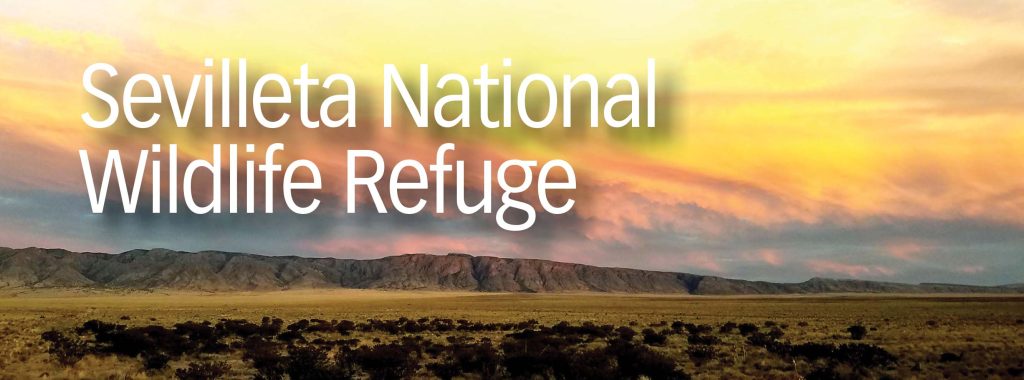
Sevilleta is a huge refuge…230,000 acres extending from the bosque along the Rio Grande to the Gila Mountains. It contains four ecological habitats where distinct group of plants and animals live in interdependent relationships. Sevilleta was at one time a Spanish land grant, then ceded to the US government in the 1848 Treaty of Guadelupe Hidalgo, and later taken over by Socorro County. The County sold it as a ranch, and it remained in private hands for 30 years. With efforts by The Nature Conservancy, it became a wildlife refuge in 1973 and is now administered by the US Fish and Wildlife.
Sevilleta mainly consists of prairie and desert grasslands, the most threatened and least protected habitat on earth. This type of grassland in New Mexico, western Texas, eastern Arizona, and northern Mexico has black and blue grammas and alkali sacaton among other grasses. With climate change and increasing temperatures, creosote shrub is beginning to crowd out this shortgrass prairie. The Chihuahuan Desert shrub is allotropic, meaning it has the ability to inhibit other plants from growing around it.
From Albuquerque, you will find the entrance 45 miles south at mile marker 169. There is an informative visitor center open Wednesday thru Saturday. Trail maps for the many trails can be found at the visitor center or on the Refuge’s website. The Nature Loop is 1.1 miles round trip and you might see quail, jack rabbits, and coyote. The Mesa View trail is 3.8 miles round trip. Pronghorn antelope, mule deer, golden eagle, black-throated sparrows, and meadowlarks can be found there. The Ladrones Vista Trail is 1.9 miles and connects the other two trails.
A project at Sevilleta sponsored by the US Fish and Wildlife ecology branch has been to transition the Mexican grey wolf from captive-breeding programs to independence in the wild. There are eight-year recovery goals for both the US (320 wolves in the wild) and Mexico (200 wolves in the wild). The US now has 200 wolves living singly or in packs, many in the Gila National Forest.
Researchers from the UNM Biology Department’s Long Term Ecologic Research (LTER) program have been engaged in many types of studies at Sevilleta since 1988. One ongoing study has been on evolutionary response by bees to environmental changes. Since 2002, native bees have been trapped between March and October and studied to look for genetic changes and other signs of bee fitness. So far, 325 species have been studied and one-third show decreased fitness, one-third are stable, and one-third appear to have adapted to tolerate climate change better.
Biocrust stabilizes the soil, and this, too, is researched, with a site exploring how to better mitigate extreme drought in grasslands. As we expect increased heat and delayed precipitation, what effect will this have on critical soil microorganisms? What might be the best inoculum to restore grassland soil in the future?
These and other on-site research areas are not open to the public, but you can read about their studies on the UNM LTER website.
by Sue Brown

